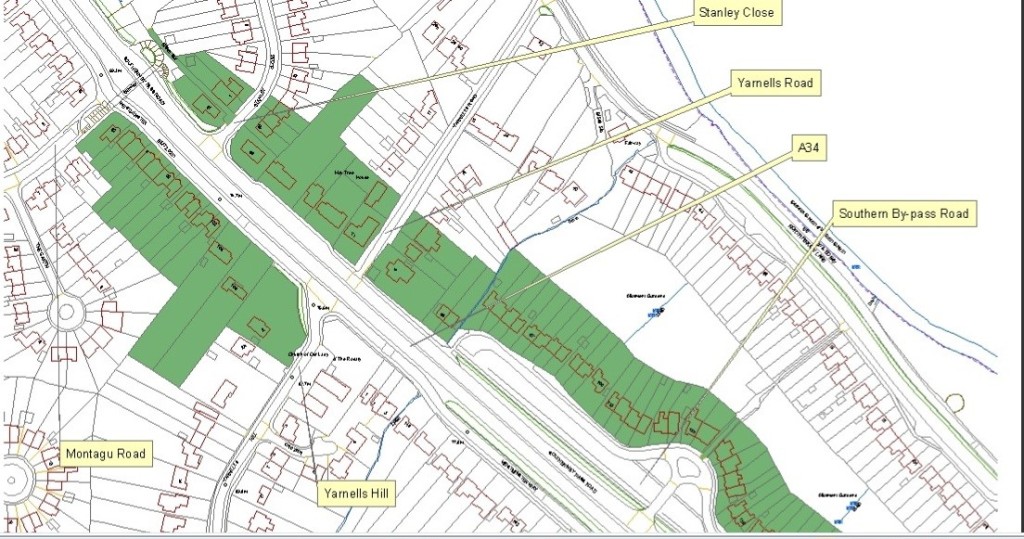(Updated on 1st Jan 2018 to include the Oxford Mail article and Cllr Ware’s update about Air Quality Action Plan items – in blue italics,.)
(Long post, sorry)
In 2015 Council published their Air Quality Action Plan, which contained 11 actions Vale committed to doing (most of them by 2017).
It looked to us Liberal Democrats like none of the action items had been completed, so we asked a question of the Cabinet member for Environmental Protection at last week’s full council meeting. You can see the question here.
We expected to get status updates for all of the outstanding actions. In anticipation of the Tories demonstrating that they hadn;t done what they said they would, Liberal Democrat Cllrs Catherine Webber and Debby Hallett tabled a motion requesting Cabinet to put funding in place for all our unmet commitments contained in the Air Quality Action Plan of 2015.
Here’s the motion:
Proposed by Cllr Catherine Webber, seconded by Cllr Debby Hallett
This Council has statutory obligations to measure and monitor Air Quality in the District, to declare Air Quality Management Areas (AQMAs) where pollution is high, and to produce Air Quality Action Plans (AQAPs).
This Council also has an obligation to facilitate and implement the actions recommended in AQAPs, wherever possible.
This Council recognises the importance of taking action to reduce air pollution. To that end, Council requests Cabinet to do two things:
- Include in their 2018/19 budget funding for all projects recommended in our 2015 AQAP that are not yet completed, and
- Ensure this Council has a Low Emissions Strategy similar to that of South Oxfordshire District Council, which will focus Council’s efforts to reduce air pollution, particularly in Vale’s AQMAs.
The quality of the debate was dissappointing, to say the least. Here are some of the notable Tory contributions:
Cllr Eric Batts, Cabinet member, had some thoughts about my mention of Government’s estimate that 50 people die per year in Vale per year due to air pollution (I quoted Government’s report and its statistical modelling, which actually said 52 people die prematurely in Vale from exposure to air pollution). He said, “I used to live in North Hinksey and I never felt any ill effects from pollution. And the 50 people maybe include people who have come here from India or Pakistan.” (I hope he was thinking about their polluted large cities and not blaming high air pollution deaths in Vale on immigrants.)
A few days later, Cllr Batts expanded on his opinion for a reporter from the Oxford Times: http://www.oxfordmail.co.uk/news/yourtown/oxford/15790602.__39_There__39_s_no_pollution_here____victims_must__39_ve_got_sick_elsewhere__39__says_councillor/
Cllr Elaine Ware, Cabinet member, said the failure to progress the action items from the 2015 Air Quality Action Plan was due to having a ‘very very hard time recruiting to fill the vacancies on the team’. (Could that have anything to do with the low staff morale caused by all the outsourcing they’ve done, and the Tories’ risky decisions to let too many of senior managers and officers leave the council?) (See her answers about Air Quailty Action Plan commitments here: http://cllrdebbyhallett.com/2017/12/16/question-on-air-quality-action-plans/)
Cllr Mike Badcock contributed the interesting idea that the cause of the pollution out the Marcham Road was the successful implementation several years back (10 or more?) of the Abits one way street system in central Abingdon, which worked to reduce air pollution from standing vehicles in Abingdon. He said that scheme worked by pushing the pollution out the A415 towards Marcham. That may be, I don’t know. But it was irrelevant to the debate.
Cllr Roger Cox, Cabinet member, added to the irrelevant comments by telling us in a shaking voice that the “previous administration” (which ended when they took control 6 years ago) only had a part time (.25fte) air quality officer, but they (the Tories) have hired a new PhD level officer. (Cllr Webber reminded him that the new officer is also part time and works 18 hrs per week.) He can get rattled when faced with logical arguments.
Cllr Ed Blagrove, Cabinet member, said that we should not spend money until we know what the new officer thinks. (Of course it WAS the officers who suggested Vale should have a Low Emission Zone Strategy, one similar to that which SODC recently adopted for their people. And the Low Emission Zone Strategy was one of the ll action items from the 2-15 Air Quality Action Plan.)
I don’t recall that the Leader Cllr Matthew Barber spoke to this motion.
So the debaters missed the point. (All but Cllr Ware, and I think I’d like to hear more about how failure to recruit staff is causing council to be unable to do the work it commits to do.)
The motion was to call for Cabinet to properly fund the work council committed to doing back in 2015, and has not done.
The motion was voted down: 8 For (all the Liberal Democrats), 20 Against (all were Tory) and 3 Abstentions (all were Tory). The abstainers couldn’t find it in themselves to vote against the motion, but it looks like they were whipped to not vote for it. We called for a named vote, so you’ll be able to see the three abstainers when the minutes are published.


